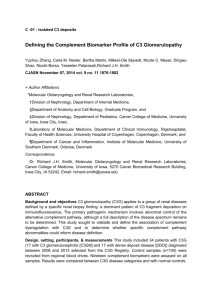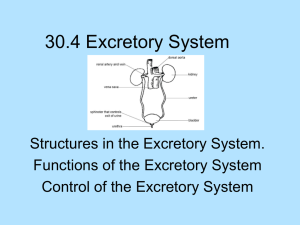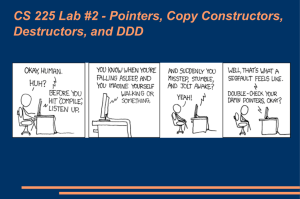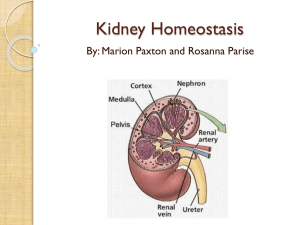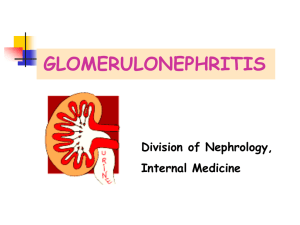MPGN Biopsies
advertisement
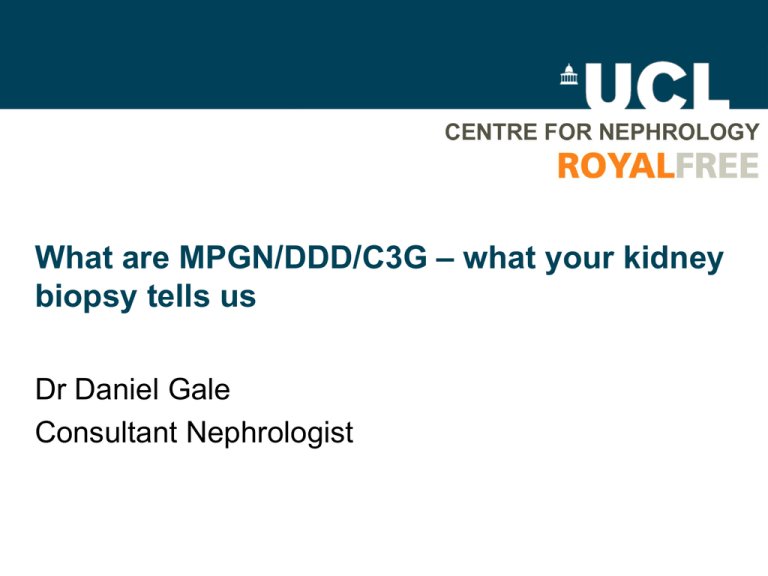
What are MPGN/DDD/C3G – what your kidney biopsy tells us Dr Daniel Gale Consultant Nephrologist Introduction • What is a kidney biopsy? • How is it processed and looked at? • What are the changes that lead to diagnosis of MPGN or C3 glomerulopathy (DDD/C3GN)? – How are these diseases classified? • Why do these changes occur? The biopsy procedure Mrug and Bissler KI 2010 The kidney biopsy Aviva medical encyclopaedia 10-30 out of 1 million glomeruli are looked at Walker et al Mod Path 2004 How are biopsies examined? Walker et al Mod Path 2004 “Light microscopy” • Fixed (pickled) in formalin • Embedded in wax (paraffin) • Sliced very thin (2 µm) • Mounted on a slide • Stained to show up cells and proteins Mrug and Bissler KI 2010 A normal glomerulus – light microscopy www.unckidneycenter.org Aviva medical encyclopaedia The normal glomerulus “Electron microscopy” Urine Blood Urine Supporting cells Pierre Russo MD The tubules Normal kidney Tubules Tubules disappear when the kidney is damaged Tubule Glomerulus Glomeruli Scarred area What do we see in MPGN/DDD/C3 glomerulopathy? Normal These appearances are defined as MPGN “Tram tracks” www.unckidneycenter.org http://library.med.utah.edu Electron dense deposits in MPGN and C3GN Normal capillary loop Electron dense deposits on inside of membrane www.unckidneycenter.org Supporting cells creep into membrane Electron dense deposits can also be seen in the outside of the membrane Dense Deposit Disease Normal capillary loop www.unckidneycenter.org Compare with MPGN What is in these deposits? • Special stains (“immuno”) reveals what they contain: • Complement (C3) almost always present • In MPGN (but not DDD/C3G) antibodies also present How are these diseases classified? MPGN Antibodies and complement deposited Complement but no antibodies deposited DDD C3GN C3 glomerulopathies Complement links MPGN, DDD and C3 glomerulopathy CFHRs X Regulators C3NeF antibody Infection or autoimmune disease Alternative Pathway Classical Pathway C1q Antibody production Complement Factor H (CFH) Complement Factor I C5 C3 Terminal Pathway Damage to kidney (MPGN) Summary – what the kidney biopsy tells us • What the disease is (MPGN, DDD or C3 glomerulonephritis) • Whether this is likely to result from antibody production (autoimmunity) or a change in a complement regulating gene • The amount of inflammation (number of cells) in the kidney • The amount of scarring in the kidney Any questions?






